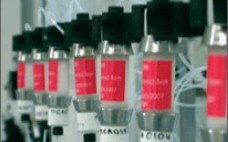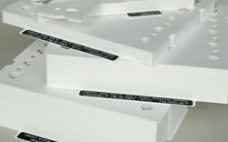Manufacturing processes for biopharmaceuticals have undergone significant changes over the past decade. One of the most striking results of improved process sciences is the dramatic rise in expression levels from animal cell cultures. Figure 1 shows how some monoclonal antibody titers have increased about 30-fold over the past 15 years. These increasing titers have allowed current biomanufacturing facilities to produce larger product quantities than anticipated at the time they were designed and built. Figure 1: As a…
Monday, June 1, 2009 Daily Archives
Single-Use Strategies in Bioprocessing
BioProcess International has followed, from the beginning, the ways in which single-use technologies have transformed the landscape of industrial bioprocessing. On 18 March 2009, we organized a panel session at the annual Interphex conference (Jacob Javitz Center, NYC) to drive discussion toward longer-term implications of single-use components and technologies on the future of bioprocessing. Is their use a cost-saving strategy overall? What economic factors are driving their adoption? The panelists were prepared to address such topics as economic considerations in…
Making Your Way to Excellence
As organizations launch operational excellence (OpEx) programs, they are faced with challenges that must be overcome before they can achieve true excellence. One of the largest barriers to overcome is employee perception. The first step is to provide training that will energize employees and change their understanding of what operational excellence can do for them and their organization. For this reason, Bayer has developed an OpEx fundamentals training that starts with the “heart and mind,” focusing on less-threatening…
The Road to a Fully Disposable Protein Purification Process
What’s keeping senior biopharmaceutical executives awake late at night? According to BioPlan Associates, Inc., which publishes an annual comprehensive survey of the state of worldwide biopharmaceutical manufacturing, capacity constraints are among the key issues at hand (1). And one of the most important constraints is the lack of physical capacity in purification equipment. Bioreactors are producing a lot more protein than current downstream purification steps are designed for. Overcoming the resulting bottlenecks may require increasing the productivity of…
Patents, Politics, and Polypeptides
Humor columnist Dave Barry once opined, “Without question, the greatest invention in the history of mankind is beer. Oh, I grant you that the wheel was also a fine invention, but the wheel does not go nearly as well with pizza.” Certainly, few biological concoctions have achieved that level of popularity — but with a little luck, your company will produce at least one invention with the potential for measurable success in its target market. But with success comes competition,…
Setting the Stage
Much has already been written lately about addressing the so-called “downstream bottleneck(s).” A number of companies are leading the way toward developing products and platforms for reducing both the costs and the time required for downstream processing. Our task with this special issue was to provide a state-of-the-art update on these activities — but as always, within a limited number of pages allotted. The primary issue behind this bottleneck debacle is to address purification challenges posed by aggregation in cell…
Single-Use, Continuous-Countercurrent, Multicolumn Chromatography
Over the past decade, improvements in the biopharmaceutical manufacturing industry have resulted in a dramatic rise in the expression levels from animal cell cultures – some mAb titers have increased 30-fold over the last 15 years. However, increased titers have led to an increase in downstream bottlenecks. To address this challenge, some manufacturers are turning to multicolumn chromatography.
The principles of simulated moving-bed technology can be applied to create a continuous-countercurrent process. The first column in a loading train is allowed to break through, and material coming off it is captured on a second column. Binding capacity can thus be exploited beyond dynamic binding capacity. These processes often significantly improve media use – and hence significantly reduce consumption of media and buffers.
A Presanitized, Purpose-Designed, Single-Use TFF Strategy
As downstream processing accounts for about 70% of the total biomanufacturing cost, it is easy to see why improvements in product recovery and purification are urgently needed. One possible response to this need is the implementation of a single-use TFF process strategy.
Sius “single-use” cassettes provide a unique solution for a cost-effective downstream processing, with measurable cost-in-use savings, while eliminating a significant amount of time performing burdensome clean-in-place (CIP) procedures. This case study outlines the experimental design, development studies, and proposed single-use commercial TFF process based on work performed by Mike LaBreck at Groupe NovaSep.
Case Study: Evaluation and Implementation of a Single-Stage Multimedia Harvest Depth Filter for a Large-Scale Antibody Process
While in the process of transferring to a new manufacturing facility, scientists and engineers at Genentech, Inc. performed small-scale studies to evaluate several candidates for a single-stage depth filter train to accommodate existing equipment at the new facility.
After testing several dual-layer, single-stage filter media, the team chose a robust filter and implemented it at commercial scale. By replacing the traditional two-stage filtration train, they were able to provide significant cost savings relative to piping reconfiguration, new equipment purchase, and new equipment validation. To learn more about the testing methods and results of this study, download the PDF linked below.



